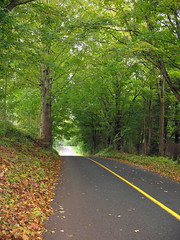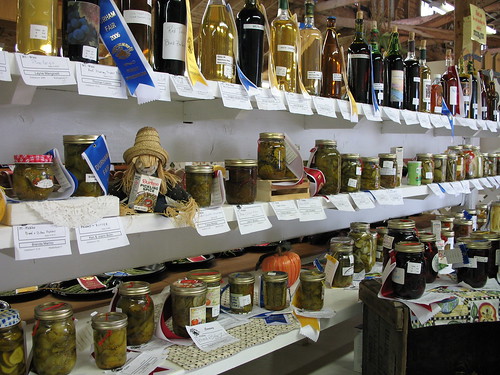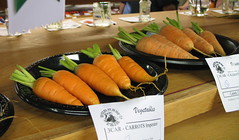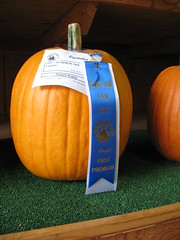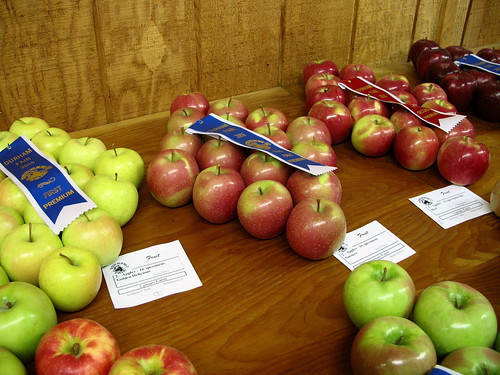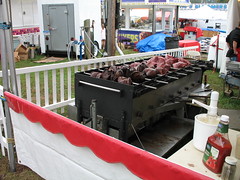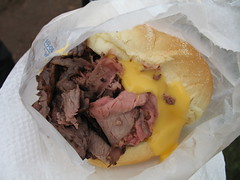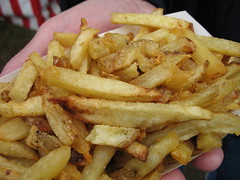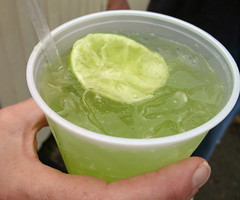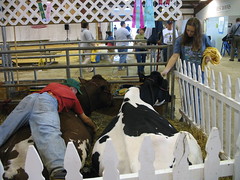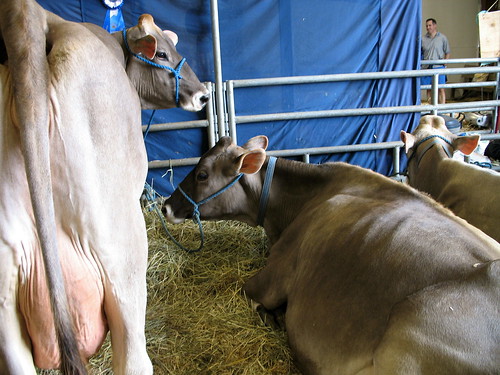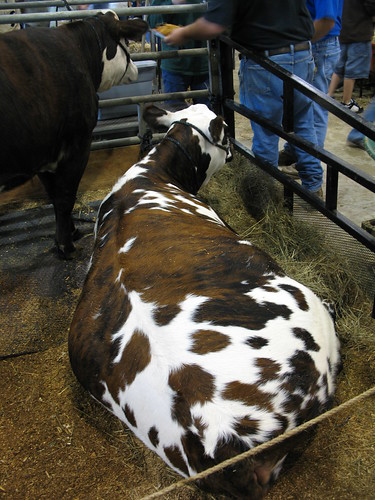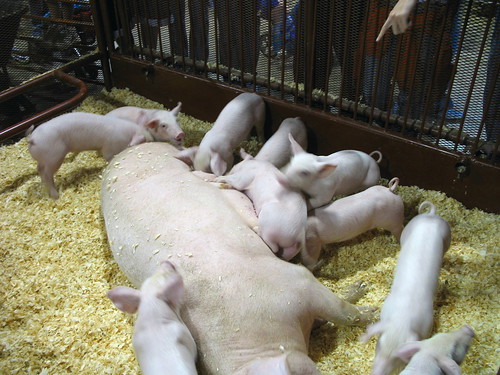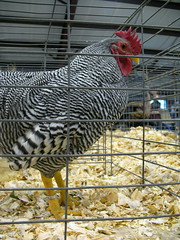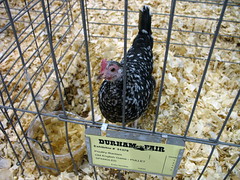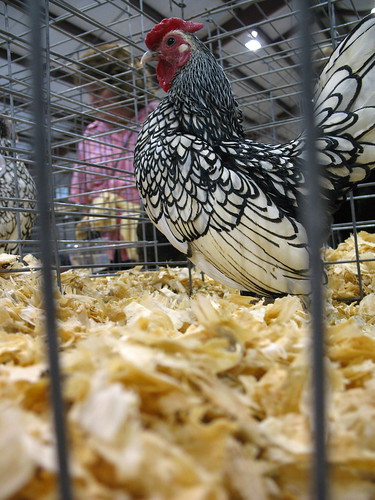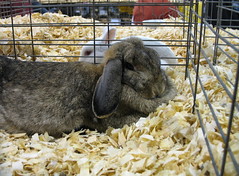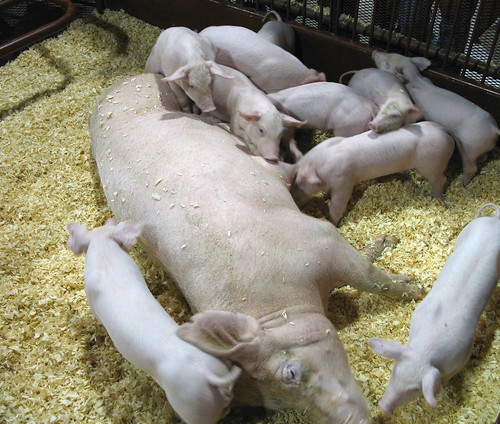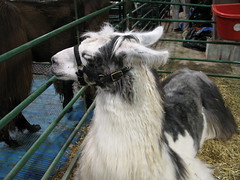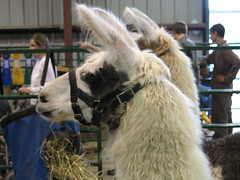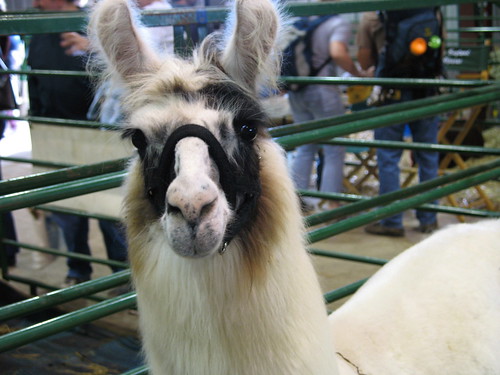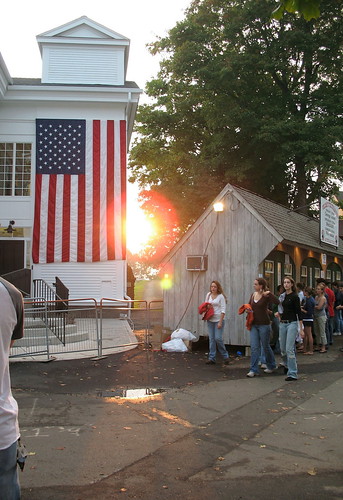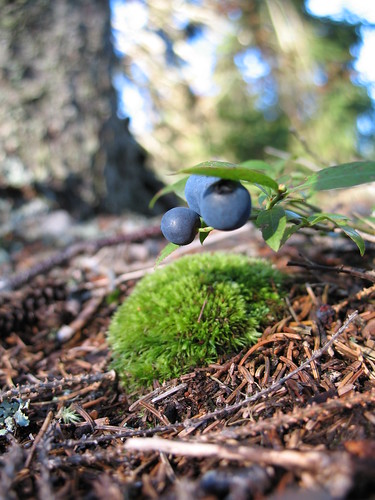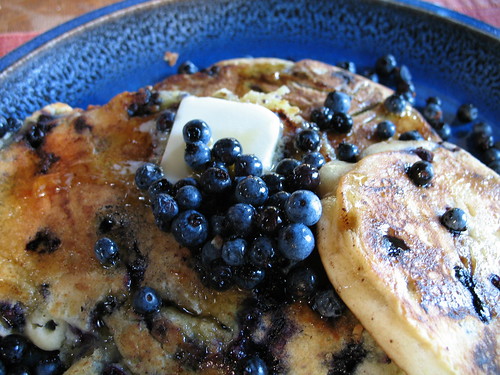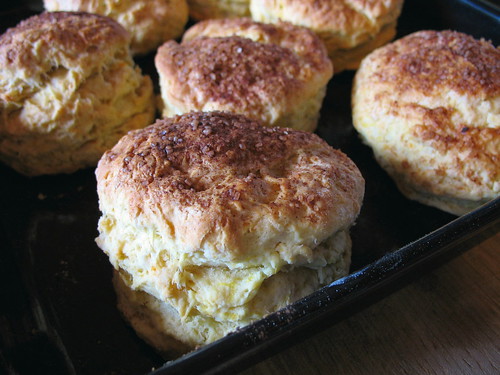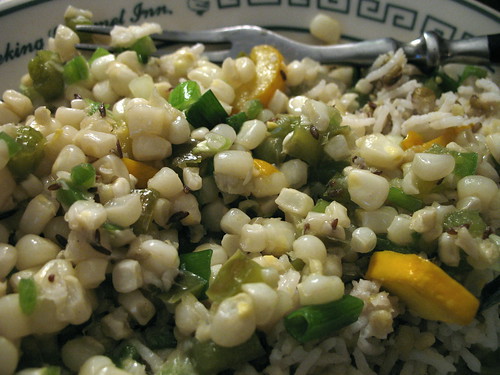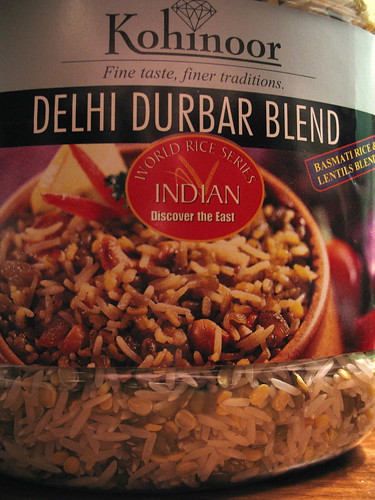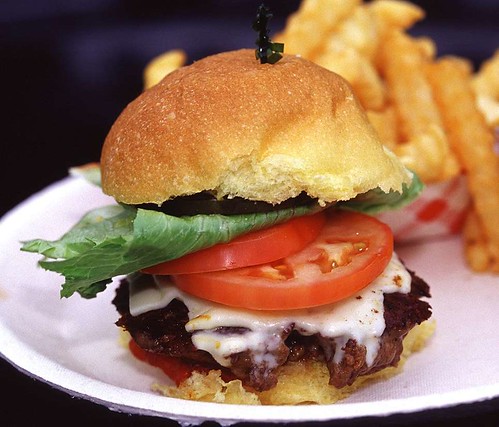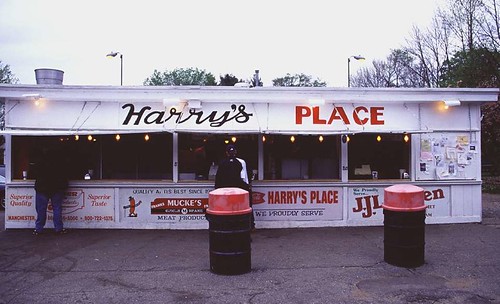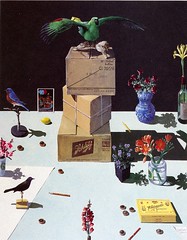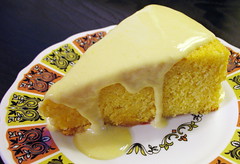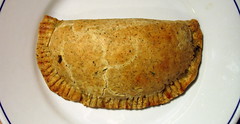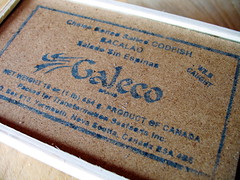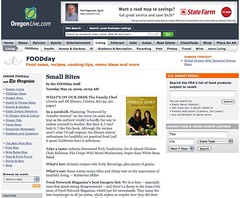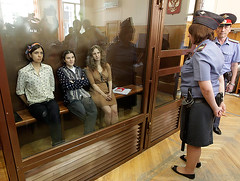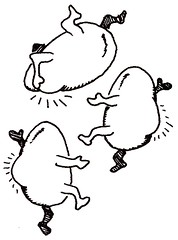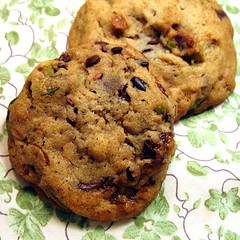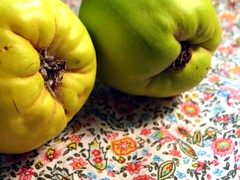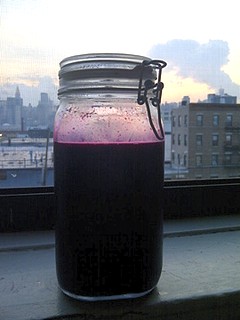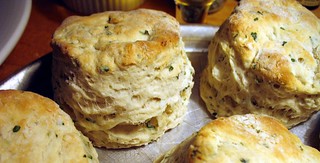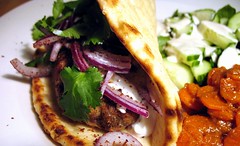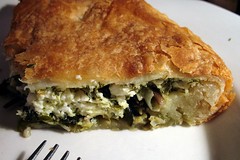I have Indian food in mind a lot lately, perhaps because I just started reading David Burton's
The Raj at Table: A Culinary History of the British in India. I'm only a few pages into it but it appears to be very well researched and so far I find it fascinating.
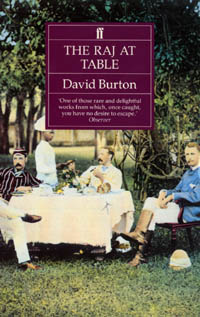
I had not considered, for example, that there were already some similarities between Indian cooking and British cooking when the first British ships arrived in India in 1608:
It should by no means be assumed . . . that the first British settlers had considered the highly spiced cuisine of India so very outlandish or strange. In 1612, English cooking had itself barely emerged from the Middle Ages, and was still heavy with cumin, caraway, ginger, pepper, cinnamon, cloves and nutmeg. Indeed, spices had for the first time become affordable to all but the poor in England, due to the breaking of the Arab monopoly of the spice trade by the Portuguese a century earlier. So the 'dumpoked' (dampukht) fowl that the English merchants were served at their first factory in Surat, stewed in butter and stuffed with spices, almonds and raisins, may have been a recipe that came from the Mogul emperor Akbar's kitchen, but it nevertheless echoed the list of ingredients for an English chicken pie given by Gervase Markham in The English Hus-wife in 1615: chicken, currants, raisins, cinnamon, mace, sugar and salt. (pp. 3-4)
There are lots of interesting recipes in the book as well but on Saturday I found myself improvising a curry while we listened to the BBC broadcast of the last night of the Proms — the Sir Henry Wood Promenade Concerts. If you are not familiar with the Proms, they are a series of classical music concerts that have taken place since 1895 (and at Royal Albert Hall since the 1940's) and they are greeted with MUCH enthusiasm. Each concert is broadcast live, and on the last night there are also simultaneous "Proms in the Park" in five other locations in the U.K., giving rise to many excited shouts of "HELLO Manchester!" and HELLO Glasgow!" and so forth. The whole thing is really very cute, particularly if you have any latent Anglophile tendencies. I don't think the
program varies much on the last night, and everyone sings along and makes a lot of racket with noisemakers, so much so that some of the audience's favorite bits are repeated. It's sort of like a cross between an American 4th of July celebration and the Rocky Horror Picture Show, and naturally such a spectacle is followed by a little self-conscious, amusingly huffy critiquing. According to the BBC's
reviews page the London
Times was relieved that "[a]t last someone has found a way to stop the Last Night of the Proms seeming so jolly, jingoistic and British," but several commenters disagreed. "As for the 'Hello, Swansea' type nonsense, it's pure Blue Peter which vulgarises the whole broadcast," wrote one. My favorite: "The programme satisfied entirely your gold standard: what will appeal to a Guardian reading woman with halitosis, a pass degree in sociology, and a job as an administrative assistant for a charity. Congratulations Beeb, spot on again."
Well!Before the curry we had chickpea flour pancakes with not-homemade coriander chutney. These are another Tiny Banquet favorite from
Madhur Jaffrey's World Vegetarian; the
recipe is also on the BBC's site for Jaffrey's show
Flavours of India. The version in the book is made with ground cumin, cayenne pepper and tumeric rather than fresh coriander, chiles, onion and garlic; I also used kalonji seeds (maybe better known as nigella seeds), tiny black seeds that are often
described as having an oregano scent. Sesame seeds are really good too. If you are using either type, sprinkle them on the uncooked top of each pancake just after the batter is added to the pan.

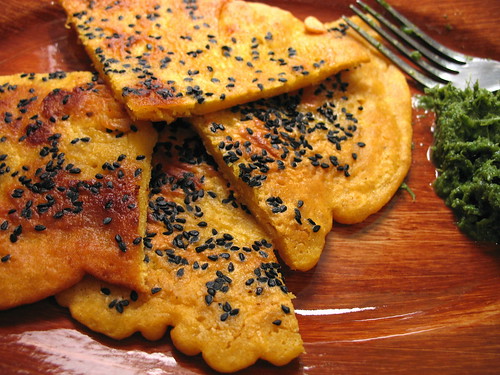
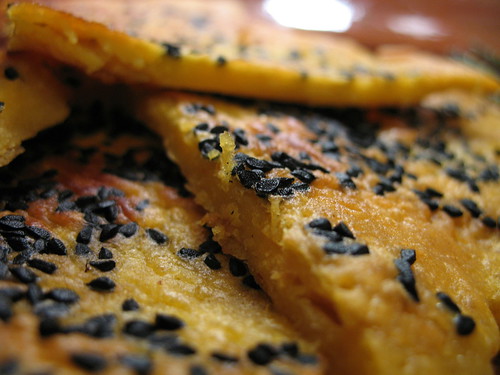
For the curry, I started with 1 pound of tofu that had been fried just until crisp on the outside. It really, really works best if you lightly dust the tofu with cornstarch first; that way it doesn't stick to the pan, and it seems to absorb little oil.
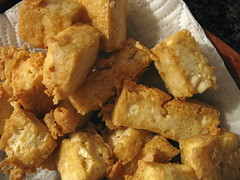
I toasted 1 tablespoon of coriander seeds and 1 teaspoon of cumin seeds in a pan until they were starting to brown and smell good, and ground them in my spice/coffee grinder with a small handful of raw cashew nuts. I know many cooks insist that you need two grinders, one for spices and one for coffee, but I have just one that I wash well in between uses, and I have never noticed that my coffee tastes like coriander or vice versa.
I chopped a small onion, a shallot, and a clove of garlic, and then had to decide how many chiles to use. Here's where things went amiss. I thought the pepper below was a serrano, which is quite hot, hotter than the jalapeños that I am used to using. Mindful of past dishes that I made too spicy (I once made Marcella Hazan's
Swordfish Sardinian-Style with Mint and Saffron with such an accidentally-generous shake of red pepper flakes that everyone was sweating long before we finished eating) and of Ann's recent preparation of
slightly-too-hot-but-still-delicious-sounding chili, I decided I was only going to use about three-fourths of it.
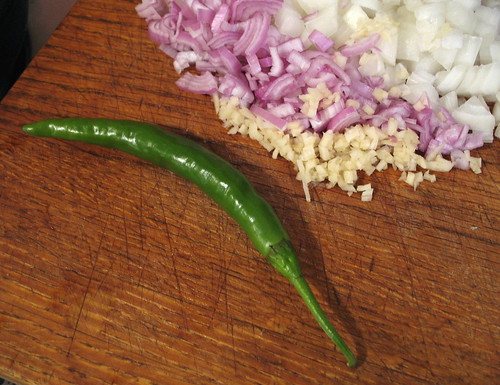
After sauteeing the onion, shallot and garlic in a vegetable oil I stirred in the spice and nut mixture and let it cook for a few moments; I then added a small can of coconut milk (5 1/2 oz.), some water, the chopped chile pepper, and about half a dozen fresh curry leaves.

The color was very dull so I also added a pinch of tumeric.
I was surprised when I tasted the curry for salt and discovered that it was not the least bit hot — and that my single, lonely pepper must have been something other than the serrano I believed it to be. The finished dish was still quite good (and was improved by a last-minute pinch of cayenne pepper), but the Committee is in need of expert advice on these matters.
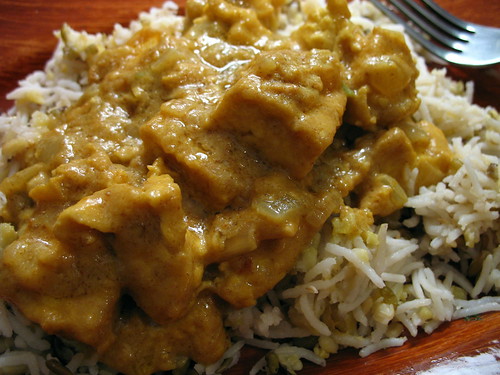
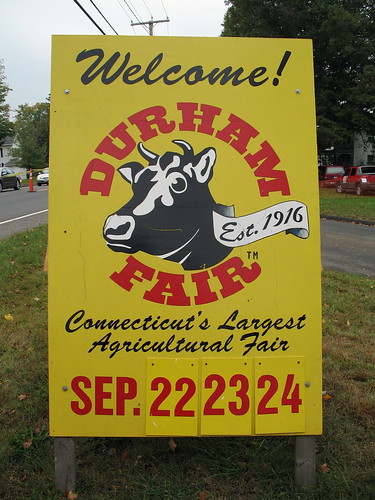 As we did last year, we went to Connecticut for the weekend to attend the Durham Fair, an agricultural fair that's been held the last weekend of every September since 1916. According to Wikipedia it is "one of the largest agricultural fairs in the world," but the fair's organizers more modestly refer to it as "the largest agricultural fair in Connecticut." There are competitive exhibits of cows, goats, pigs, chickens, rabbits, sheep, llamas, fruits and vegetables, etc., all lovingly brushed or groomed or scrubbed or polished in hopes of winning a ribbon. Durham is a small, very pretty town about twenty miles north east of New Haven.
As we did last year, we went to Connecticut for the weekend to attend the Durham Fair, an agricultural fair that's been held the last weekend of every September since 1916. According to Wikipedia it is "one of the largest agricultural fairs in the world," but the fair's organizers more modestly refer to it as "the largest agricultural fair in Connecticut." There are competitive exhibits of cows, goats, pigs, chickens, rabbits, sheep, llamas, fruits and vegetables, etc., all lovingly brushed or groomed or scrubbed or polished in hopes of winning a ribbon. Durham is a small, very pretty town about twenty miles north east of New Haven. 